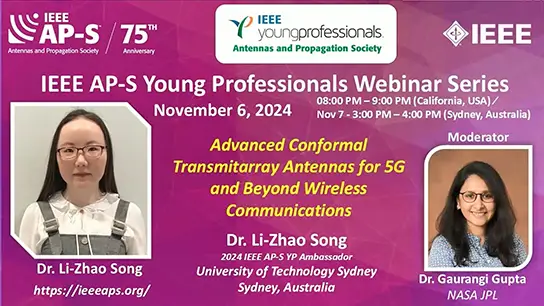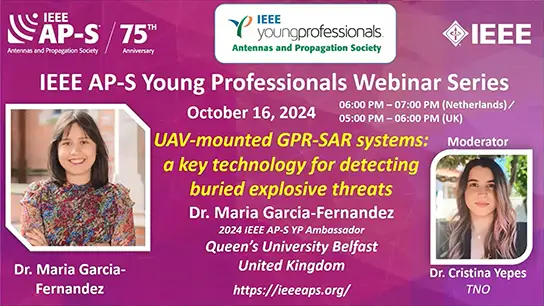IEEE AP-S Young Professional Ambassador Talk: From Old to New: How to Properly Apply Novel Ideas to a Conventional Research Domain—the Case of Compressive Antenna Arrays
Heinrich Edgar, Arnold Laue
-
Members: FreeAPS
IEEE Members: Free
Non-members: FreeLength: 00:46:14
01 May 2022
High-impact scientific publications have been shown to be highly conventional while also drawing inspiration from a few highly unexpected sources. Balancing novelty and conventionality is a tricky business. Too much novelty leads to contributions that are difficult to compare to conventional techniques, whereas too much conventionality leads to stagnation. In this talk, we look at the case of compressive antenna arrays and how a signal-processing concept went from being naively copied to antenna arrays to inspiring a new type of antenna array that offers improved performance in conventional antenna-array terms.
Heinrich Edgar Arnold Laue (S'16-M'21) received the Bachelor of Engineering (Electronic) and Bachelor of Engineering Honours (Electronic) degrees, both with distinction, from the University of Pretoria, South Africa in 2015 and 2016, respectively. He received the Ph.D. (Engineering) degree from the same university in 2020 at the age of 28. His primary research interest being compressive antenna arrays, he has publications in journals and magazines of the IEEE Signal Processing, Antennas and Propagation, and Microwave Theory and Techniques societies. He has also acted as peer reviewer for several IEEE journal submissions.
In 2019, he returned to his home country of Namibia and joined Namibia Water Corporation Ltd as a communications engineer, where he is mainly responsible for the design, installation and maintenance of telemetry systems, as well as the design of related SCADA systems. After barely two years in industry, he successfully registered as a Professional Engineer with the Engineering Council of Namibia as well as the Engineering Council of South Africa, the latter being a signatory to the Washington Accord.
Heinrich Edgar Arnold Laue (S'16-M'21) received the Bachelor of Engineering (Electronic) and Bachelor of Engineering Honours (Electronic) degrees, both with distinction, from the University of Pretoria, South Africa in 2015 and 2016, respectively. He received the Ph.D. (Engineering) degree from the same university in 2020 at the age of 28. His primary research interest being compressive antenna arrays, he has publications in journals and magazines of the IEEE Signal Processing, Antennas and Propagation, and Microwave Theory and Techniques societies. He has also acted as peer reviewer for several IEEE journal submissions.
In 2019, he returned to his home country of Namibia and joined Namibia Water Corporation Ltd as a communications engineer, where he is mainly responsible for the design, installation and maintenance of telemetry systems, as well as the design of related SCADA systems. After barely two years in industry, he successfully registered as a Professional Engineer with the Engineering Council of Namibia as well as the Engineering Council of South Africa, the latter being a signatory to the Washington Accord.


